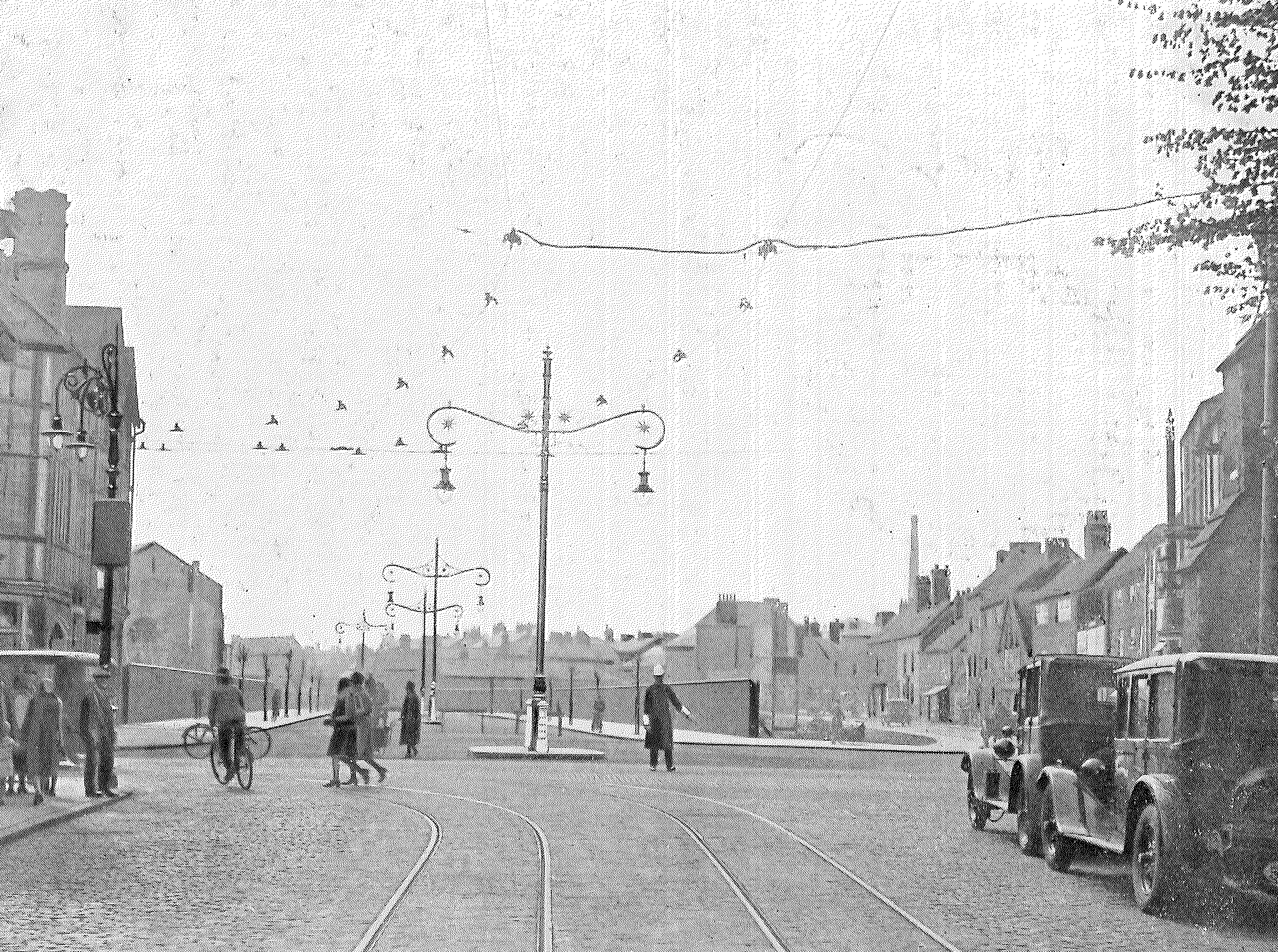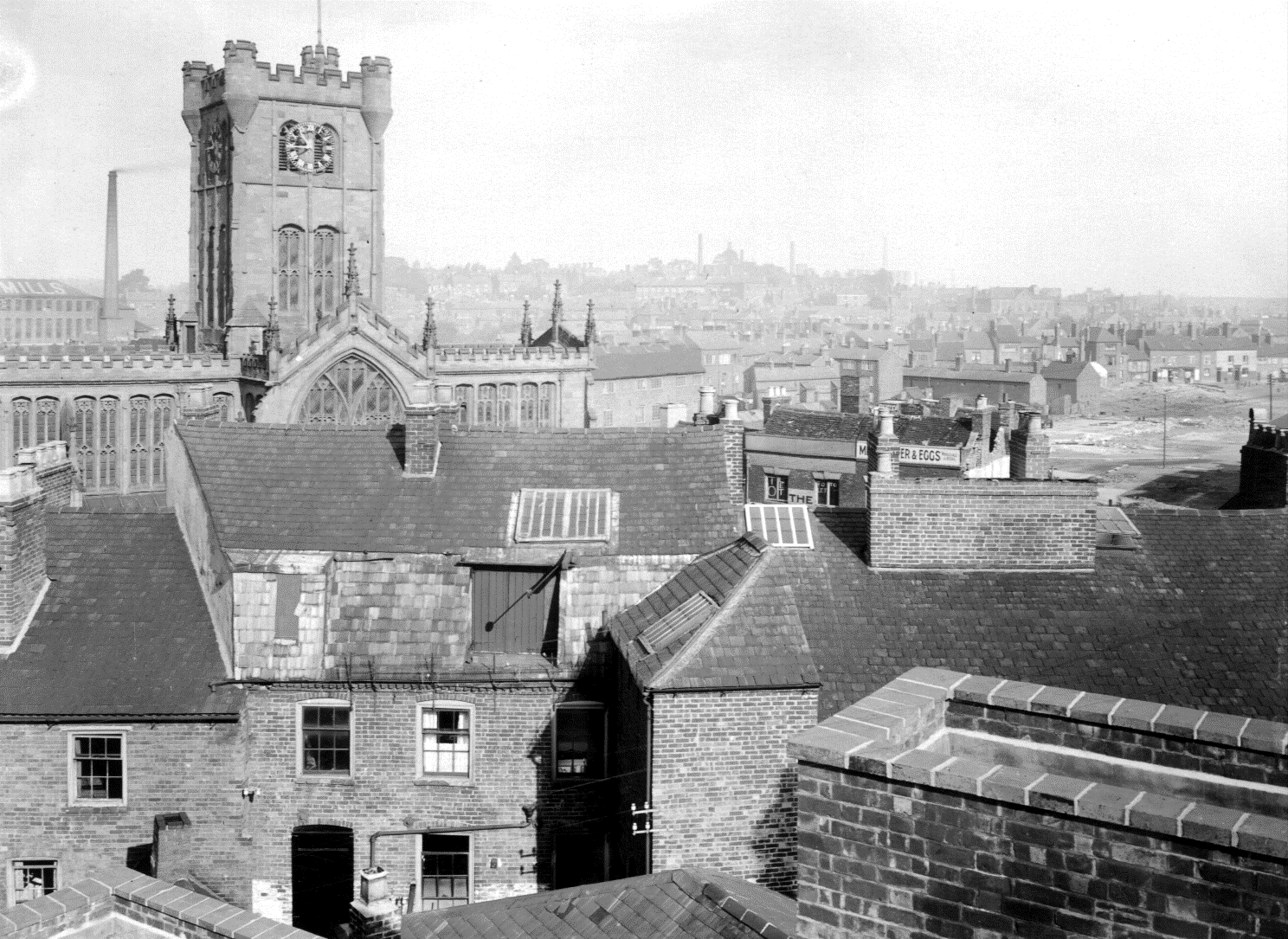Tales from the Archives: A Street fit for a Corporation
15 June 2019
Corporation Street was officially opened by Mayor William Batchelor on Monday 15 June 1931 but plans for a new thoroughfare between Hales Street and Fleet Street had first been suggested in 1910. (1)

Photograph from the official programme for the Opening of Corporation Street, 1931
The city’s population had grown dramatically, and the city centre was becoming congested. Together with the increase in population, the city’s weaving industry had given way to light engineering and cycling factories, and the crowded jumble of industrial premises, together with public buildings and poorly maintained domestic housing was of growing concern. To help address the issue, the council proposed a new road to ease traffic and clear away the slums. Contrary to expectations, however, the Council found its scheme being rejected at a town meeting in January 1911; it was revived in 1914 to a more favourable response but was postponed with the outbreak of World War One.
It wasn’t until 1920 and the passing of the Coventry Corporation Act, that the Council was finally able to go ahead with its plans. In the next five years, it would acquire the vast array of properties that populated the site – several licensed premises, numerous factories and shops, as well as eighty seven houses. These houses were little more than slum dwellings, arranged in courts that often stood in the shadow of old factory walls. The ground beneath them was riddled with old cellars and wells. The Council would eventually build eighty homes at Gulson Road to replace the ones it demolished, as well as take special precautions to secure the new carriageway’s foundations.

Photograph from 1926, showing St John the Baptists Church and the first indications (top right) of the new carriageway that would become Corporation Street
When Mayor Batchelor finally cut the ribbon and declared Corporation Street open it was, perhaps, just a small indication of how Coventry was responding to its rapid growth as a modern, industrialised city: the day after the opening, the “Midland Daily Telegraph” reported that the Coventry Extension Bill was being sent for its third reading; the passing of this Act would eventually bring areas such as Foleshill within the city limits. (2)
Notes:
1) A full report on the opening of Corporation Street can be found on page 3 of the Midland Daily Telegraph, 15 June 1931 edition: “Corporation Street: Opening of Coventry’s New Thoroughfare”;
2) The Coventry Boundary Extension Act eventually brought within the city limits parts of Binley, Exhall, Foleshill, Keresley, Walsgrave on Sowe, Willenhall, Wyken, Allesley, Coundon, Baginton, Stivichall and Stoneleigh. It also brought approximately 17,000 extra people within the city. According to the 1932 City of Coventry Municipal Handbook, this put the population of Coventry at the end of 1931 at just over 167,000